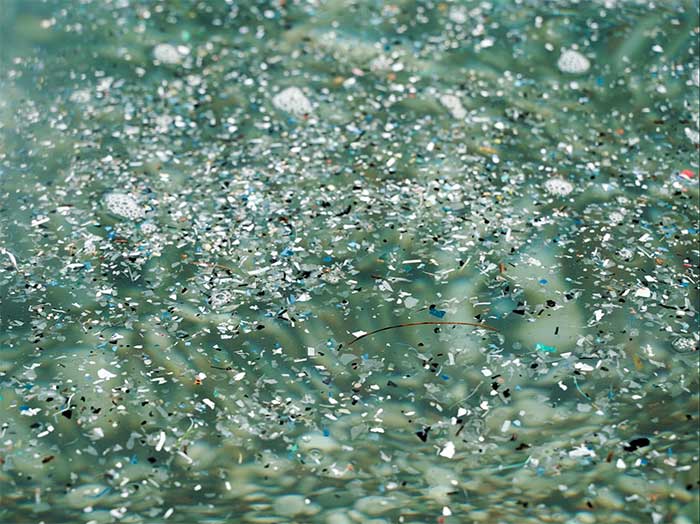A new study has discovered that not only do microplastics harm the environment, but they also spread pathogens and even increase antibiotic resistance.
A recent study published in the journal The Eco-Environment & Health identified the potential dangers of microplastics spreading in water bodies.

Some marine areas in the Arctic region are heavily polluted by plastic due to Atlantic Ocean currents dumping waste – (Getty Images/iStockphoto).
According to the in-depth research results on the interactions between microplastics and bacteria, scientists from Shuren University in Zhejiang and the China Agricultural University found that pathogens can attach to microplastic particles, using them as a transmission medium.
The study also showed that not only microplastics but also nanoplastics alter soil bacteria and increase antibiotic resistance.
Notably, due to their small size and large surface area, nanoplastics have a more significant impact, even in small quantities.
The scientists conducting this research emphasized the “urgent need to enhance monitoring of microplastic pollution.”
The study also called for additional research investigations to consider “the role of microplastics in pathogen transmission, along with associated health risks.”
Microplastics pose serious health risks to living organisms. Scientists have found microplastic particles in the stomachs of various organisms, from small invertebrates to large mammals like bears, whales, and deer.
When organisms ingest microplastics, these plastic waste particles can accumulate and may cause inflammation, neurotoxicity, and gut imbalance.
Tens of trillions of microplastic pieces in the ocean Microplastics are small plastic particles less than 5mm in size, broken down from industrial materials and the degradation of plastic products. They are widely present in marine and freshwater ecosystems worldwide. Microplastics release harmful substances into soil, air, and water. Since microplastics are made from synthetic materials, they do not decompose and persist indefinitely in the environment and our bodies. Plastic pollution threatens the biodiversity of underwater ecosystems, especially as scientists have identified 24.4 trillion microplastic pieces in the ocean. However, the total number of microplastics floating in the ocean is estimated to be much higher. |




















































